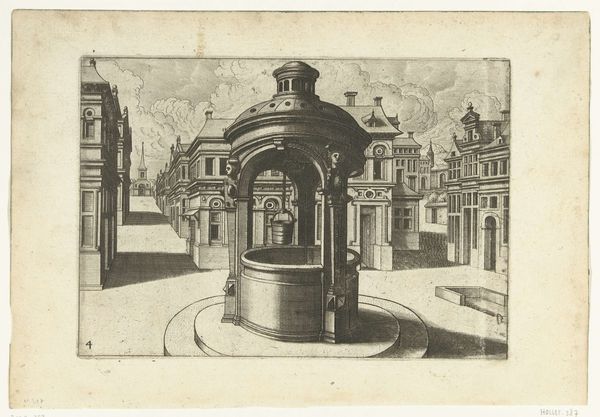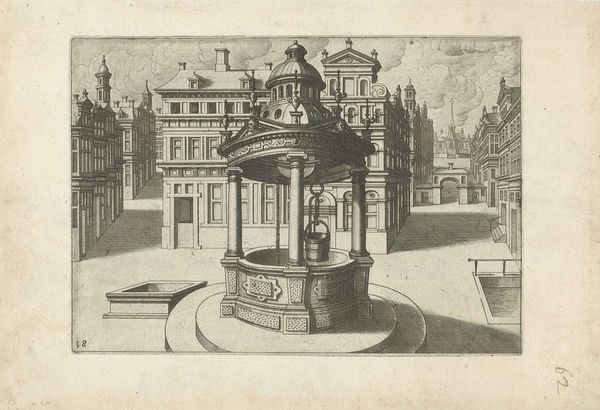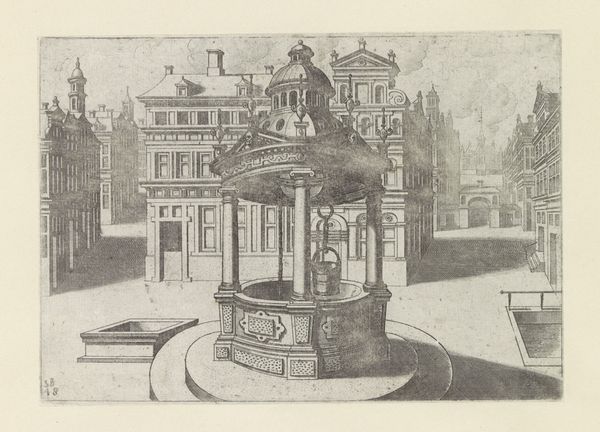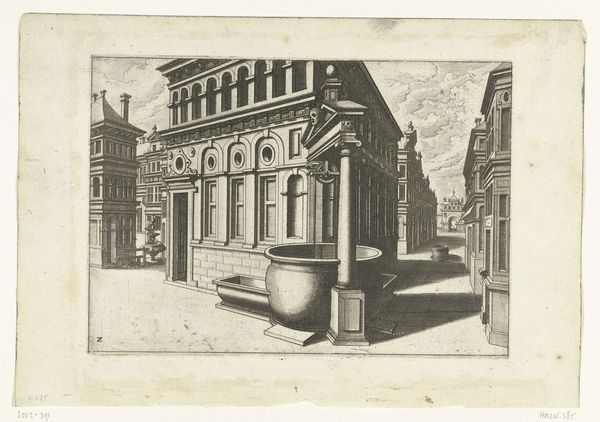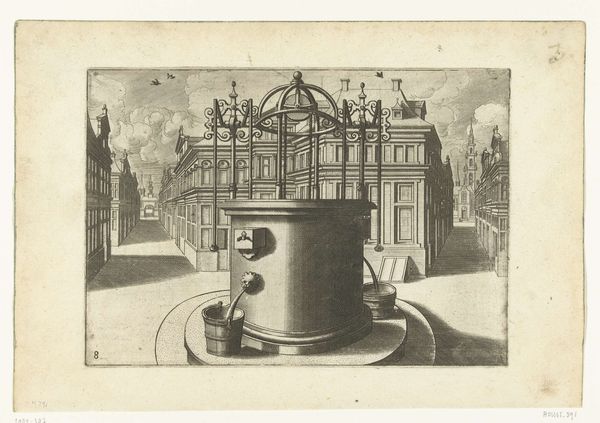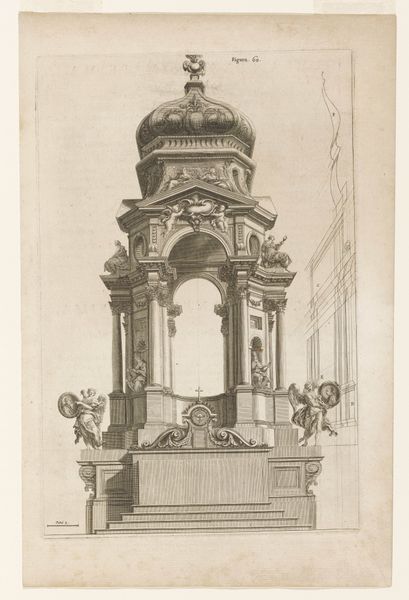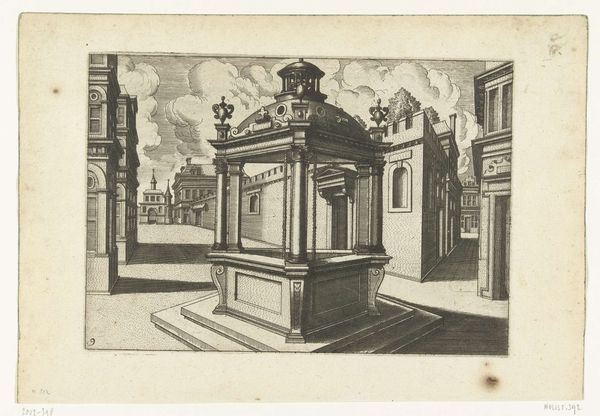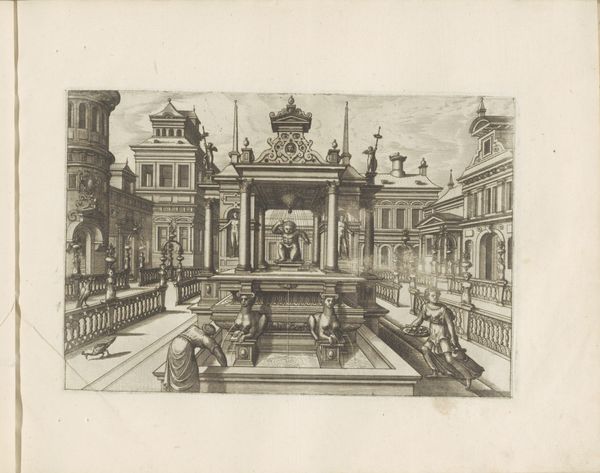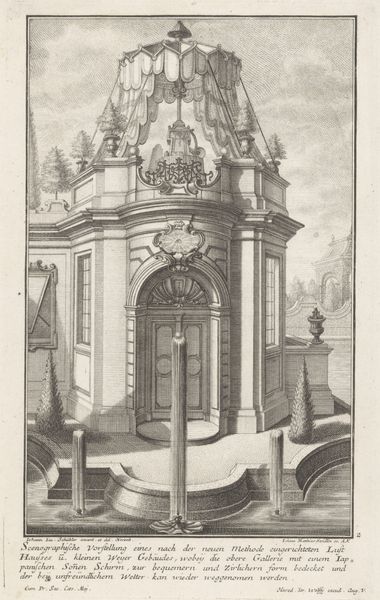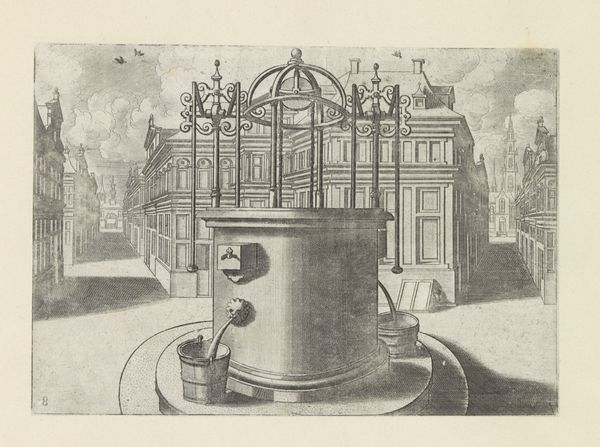
Ronde waterput onder een koepel met een lantaarn c. 1574
0:00
0:00
drawing, print, etching, engraving, architecture
#
drawing
# print
#
etching
#
old engraving style
#
11_renaissance
#
pen-ink sketch
#
cityscape
#
northern-renaissance
#
engraving
#
architecture
Dimensions: height 142 mm, width 202 mm
Copyright: Rijks Museum: Open Domain
Editor: So, here we have "Ronde waterput onder een koepel met een lantaarn," or "Round Well Under a Dome with a Lantern," made around 1574 by Johannes or Lucas van Doetechum. It's an engraving – or etching - a very precise city scene. I'm really struck by how orderly everything looks, almost like a stage set, and the dome looks rather grand. What jumps out at you? Curator: A stage set is exactly right! It’s the meticulousness that fascinates me. It's more than just a well; it’s a *theatrum mundi* – a little stage presenting the world. See how the lines all converge? How that perspective, slightly wonky by modern standards, draws you in? It whispers tales of a city self-consciously aware of its own image, trying perhaps to show order amidst a world in turmoil. Do you get a sense of the intent behind choosing a mundane well as the centerpiece? Editor: Hmm, I hadn't considered that... You mean it's not just a pretty scene, but it's trying to communicate something about the city itself? Is it typical to elevate the mundane like that? Curator: Absolutely! Think of it like a public service announcement, a Renaissance version of ‘keep your city tidy'. But it goes deeper, I believe. Water was life, especially back then, so elevating the well… elevating water…becomes symbolic. Cleansing, life-giving…it suggests civic pride and perhaps even a veiled moral message about purity. And, you have to think: who gets to use this well? Editor: That adds a whole layer of social commentary, who has access, and who doesn’t! Seeing the image now makes me consider the symbolism behind everyday elements, too. I appreciate seeing how much artistry and detail there is in the ordinary objects from this era, and its function! Curator: Precisely! It's amazing how the simplest of subjects become intricate tapestries reflecting the complexities of life and social class in 16th century Netherlands. Thank you for prompting this discussion – art is so much richer when we explore those links!
Comments
No comments
Be the first to comment and join the conversation on the ultimate creative platform.

